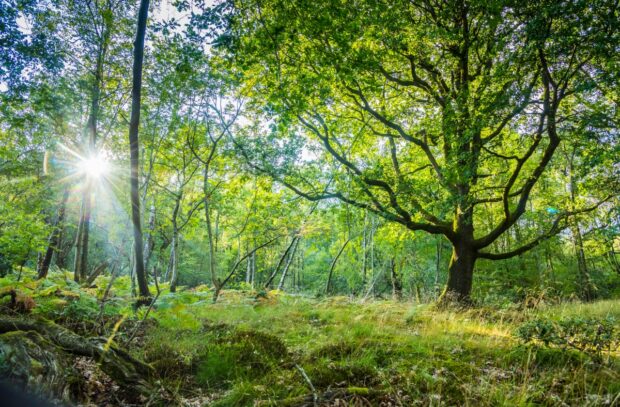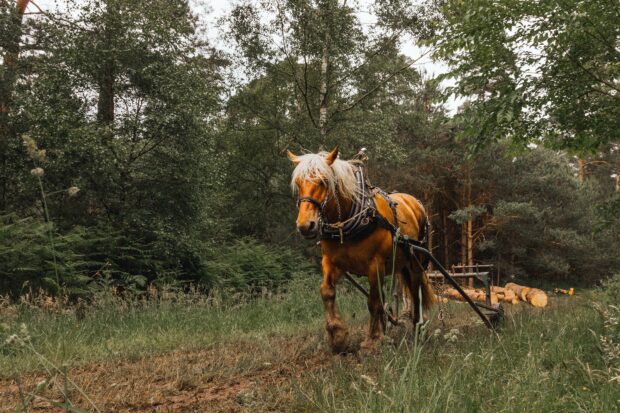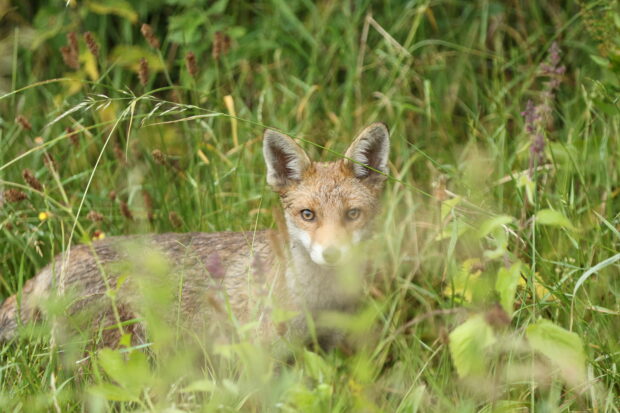 MacBradan Bones is a Woodland Officer for the Forestry Commission based in the East and East Midlands Area. Here he shares tips on managing your woodland in the summer months.
MacBradan Bones is a Woodland Officer for the Forestry Commission based in the East and East Midlands Area. Here he shares tips on managing your woodland in the summer months.
Summer has arrived, and with it the hope for days filled with sunlight and opportunities to make the most of being outdoors.
A fully developed canopy means that the woods can be much cooler and damper than un-wooded areas, so it is a vital part of helping to mitigate the effects of climate change, not to mention just being more pleasant to be in on a hot day! So make the most of the shade to check on your woodland when the sun is out, and follow our tips for the best management practices to carry out in summer.

As always tree health in woodland is a top priority and once the trees are in full leaf it is easy to spot the ones that are struggling and looking weaker than their neighbours. Dying and diseased trees will be obvious by their thin or absent crowns. If any trees are showing signs of diseases like Chalara Ash dieback, acute oak decline, sweet chestnut blight or ramorum (sadly, to name but a few) they should be reported via the ‘Tree Alert’ portal.
Where a tree has died it could be left in-situ if it’s safe to do so unless you are instructed to fell the tree by the Forestry Commission. Deadwood, and standing deadwood in particular, is a rare but vital component of a healthy, well-functioning woodland. Tiny organisms like fungi and bacteria to larger ones such as beetles, bees and bats will benefit from it.
In recent years we’ve suffered from an increased frequency of droughts and this year looks no different; all trees might be suffering from a lack of water but any young, planted trees will be particularly vulnerable as their roots will be too small to reach down far for water so they may need watering until their root systems have developed enough. You can read more about how to help your trees survive drought in our blog post published last year. Should the trees succumb, however sad this might be, it is important to replant, but also worth considering a species or provenance that is better able to cope with the next drought.
When checking on your young trees make sure they aren’t being smothered by weeds taking advantage of the shelter and growing inside the tubes. If needed, lift the tube gently up to expose the base of the tree to get at the weed’s roots. Weed control is important when using tree shelters as young trees are very vulnerable to competition for moisture. While you’re there check for vole damage to the bark at the base of the tree; although they have many advantages, tree tubes are a great hiding place for hungry small mammals!
If your woodland does have a fully closed canopy, this will be shading the forest floor and it can be a sign that the woodland will benefit from thinning. This will allow the understorey and any regeneration to thrive and increase the structural diversity – dappled shade is what we are aiming for in many of our woodlands.

As the ground is now more likely to be firm and dry, any timber extraction or processing can be done now but as always, carefully check cord stacks and timber piles for nesting wildlife first. Some work is more conveniently done within the wood, such as domestic firewood processing; all the sawdust and chips can remain in the wood, helping to conserve nutrients. Commercial firewood production is a very different enterprise and there are strict rules around the seasoning and processing of firewood for sale; if this is something you’re considering in your wood please check the regulations first. Selling wood for domestic use in England - GOV.UK (www.gov.uk)
In small scale operations where specialised equipment like forwarders aren’t available or appropriate, large butts can be ‘skidded’ out, pulled by tractors, or more traditionally (and wonderful to watch) using horses.
When extracting large butts, great care should be taken in planning the work, avoiding unnecessary damage to the ground, trees shrubs and other plants and to the product. Dirt and scrapes can lower the value of timber and damage any tools used to process it.

As at any time of the year, don’t forget to pause for a moment and just enjoy the woods. Bees and other insects will be buzzing by in search of nectar, looper caterpillars will be doing their slow-motion bungee jumps from the oaks and a myriad of butterflies and moths will be flitting along rides. If you stand still long enough, especially at dawn or dusk, you might spy foxes, stoats and other small mammals introducing their young to the world.



2 comments
Comment by Dr John Jackson posted on
Useful reminders and concept but should the recent spread of oak processionary moth to Derbyshire be flagged up too and doesn't one of the images show an invasive species (one of the balsams) and the chainsaw left in a precarious position.
I appreciate the choice of images may not have been the author's though but the idea of this seasonal reminder is useful and to be welcomed .
Comment by Faye Dawson posted on
Thank you for your comment, we have now updated the chainsaw image.